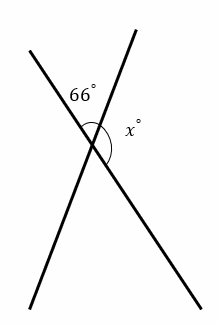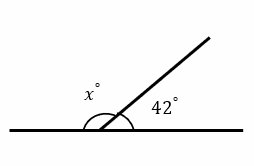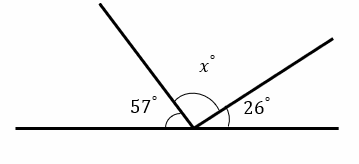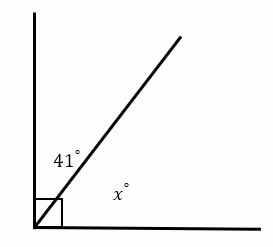How to Solve Unknown Angles? (+FREE Worksheet!)

In this article, you will learn how to solve unknown angles in a few simple steps.
Step by step guide to Solve for unknown angles
To determine the measurement of an unknown angle, we must identify the angle relationship(s), and then model the relationship with an equation that will yield the unknown value.
If the sum of the measurements of two angles is \(90^{\circ}\), angles are complementary angles and one is the complement of the other. If two complementary angles are adjacent to each other (have a vertex and a common side), the other two non-common sides will form a right angle.
In geometry, two acute angles of a right triangle complement each other. Since the sum of the internal angles of the triangle must be \(180\) degrees, and the right angle of the triangle itself is \(90\) degrees, then the sum of the two remaining angles must be \(90\) degrees, and they will complement each other.
If the sum of the measurement of two angles is \(180^{\circ}\), angles are supplementary angles and one is the supplement of the other.
When two supplementary angles are adjacent to each other (have a vertex and a common side), the two non-common sides form a straight line or a straight angle. For example, the supplement of \(135^{\circ}\) angle is equal to \(135-180\). This means the supplement of the \(135^{\circ}\) angle is the \(45^{\circ}\) angle.
Supplementary angles can be separated and they do not have to be on a straight line. for example, adjacent angles of a parallelogram supplement each other in pairs.
Solving for unknown angles Example 1:
Find the measure of \(x\).
Solution: The two angles are a linear pair (from a straight line), So they must add to\(=180^{\circ}\)
Write an equation based on what you know: \(x+66=180\)
Solve the equation: \(x+66=180→x=180-66→x=114\)
The missing angle is \(x=114^{\circ}\)

Solving for unknown angles Example 2:
Find the missing angle.
Solution: The two angles are a linear pair (from a straight line), So they must add to\(=180^{\circ}\)
Write an equation based on what you know: \(x+42=180\)
Solve the equation: \(x+42=180→x=180-42→x=138\)
The missing angle is \(x=138^{\circ}\)

Exercises for Solving for unknown angles
Find the measure of the missing angle.
1)

2)


- \(x=97^{\circ}\)
- \(x=49^{\circ}\)
Related to This Article
More math articles
- How to Solve Word Problems of Absolute Value and Integers?
- 8th Grade SBAC Math Practice Test Questions
- Top 10 Math Books for Grade 4: Empowering Young Minds to Discover Numbers
- Other Topics Puzzle – Challenge 98
- A Comprehensive Collection of Free TASC Math Practice Tests
- Top 10 CLEP College Mathematics Prep Books (Our 2023 Favorite Picks)
- FREE 7th Grade PSSA Math Practice Test
- 6th Grade Georgia Milestones Assessment System Math FREE Sample Practice Questions
- Algebra Puzzle – Challenge 40
- What Does the CBEST Test Qualify You For?


























What people say about "How to Solve Unknown Angles? (+FREE Worksheet!) - Effortless Math: We Help Students Learn to LOVE Mathematics"?
No one replied yet.